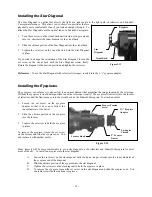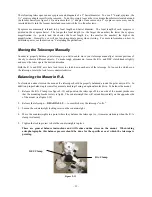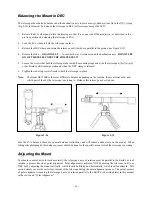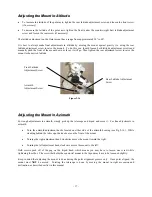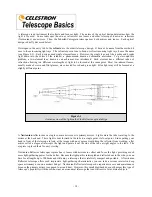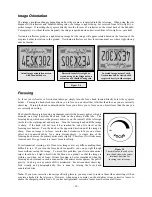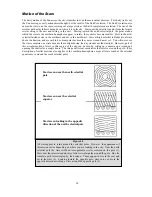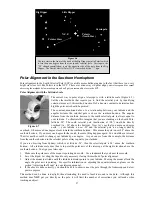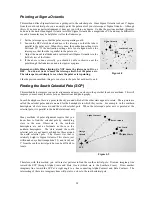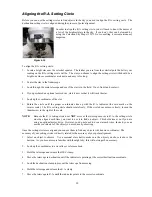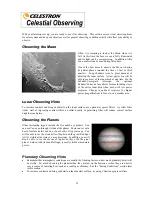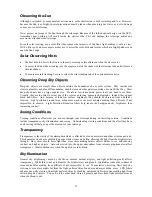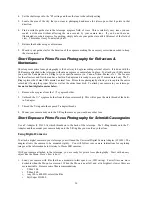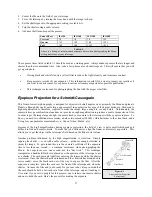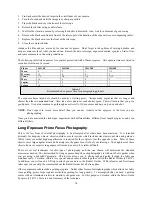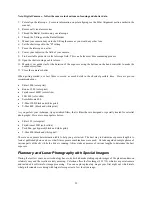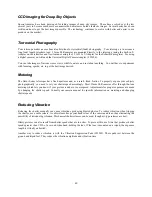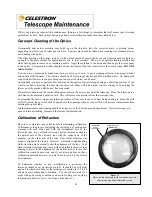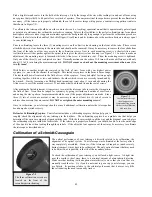
27
P
P
o
o
l
l
a
a
r
r
A
A
l
l
i
i
g
g
n
n
m
m
e
e
n
n
t
t
i
i
n
n
t
t
h
h
e
e
S
S
o
o
u
u
t
t
h
h
e
e
r
r
n
n
H
H
e
e
m
m
i
i
s
s
p
p
h
h
e
e
r
r
e
e
Polar alignment to the South Celestial Pole (SCP) is a little more challenging due to the fact that there is no very
bright star close to it like Polaris is in the NCP. There are various ways to polar align your
telescope and for casual
observing the methods below are adequate and will get you reasonably close to the SCP.
Polar Alignment with the Latitude Scale
The easiest way to polar align a telescope is with a latitude scale (Figure 4-7).
Unlike other methods that require you to find the celestial pole by identifying
certain stars near it, this method works off of a known constant to determine how
high the polar axis should be pointed.
The constant, mentioned above, is a relationship between your latitude and the
angular distance the celestial pole is above the southern horizon. The angular
distance from the southern horizon to the south celestial pole is always equal to
your latitude. To illustrate this, imagine that you are standing on the South Pole,
latitude -90°. The south celestial pole (declination of -90°) would be directly
overhead (i.e., 90° above the horizon). Now, let’s say that you move one degree
north — your latitude is now -89° and the celestial pole is no longer directly
overhead. It has moved one degree closer toward the southern horizon. This means the pole is now 89° above the
southern horizon. If you move one degree further north, the same thing happens again. You would have to travel
70 miles north or south to change your latitude by one degree. As you can see from this example, the distance
from the southern horizon to the celestial pole is always equal to your latitude.
If you are observing from Sydney, which is at latitude -34°, then the celestial pole is 34° above the southern
horizon. All a latitude scale does then is to point the polar axis of the telescope at the right elevation above the
southern horizon. To align your telescope:
1. Make sure the polar axis of the mount is pointing due south. Use a landmark that you know faces south.
2. Level the tripod. Leveling the tripod is only necessary if using this method of polar alignment.
3. Adjust the mount in altitude until the latitude indicator points to your latitude. Moving the mount affects the
angle the polar axis is pointing. For specific information on adjusting the equatorial mount, please see the
section “Adjusting the Mount” in your telescope manual.
4. If the above is done correctly, you should be able to observe near the pole through the finderscope and a low
power eyepiece.
This method can be done in daylight, thus eliminating the need to fumble around in the dark. Although this
method does
NOT
put you directly on the pole, it will limit the number of corrections you will make when
tracking an object.
Figure 4-6
The two stars in the front of the bowl of the Big Dipper point to Polaris which
is less than one degree from the true (north) celestial pole. Cassiopeia, the
“W” shaped constellation, is on the opposite side of the pole from the Big
Dipper. The North Celestial Pole (N.C.P.) is marked by the “+” sign.
Figure 4-7
Big Dipper
Litle Dipper
Cassiopela
N.C.P. Polaris
(North Star)
Pointer Stars


